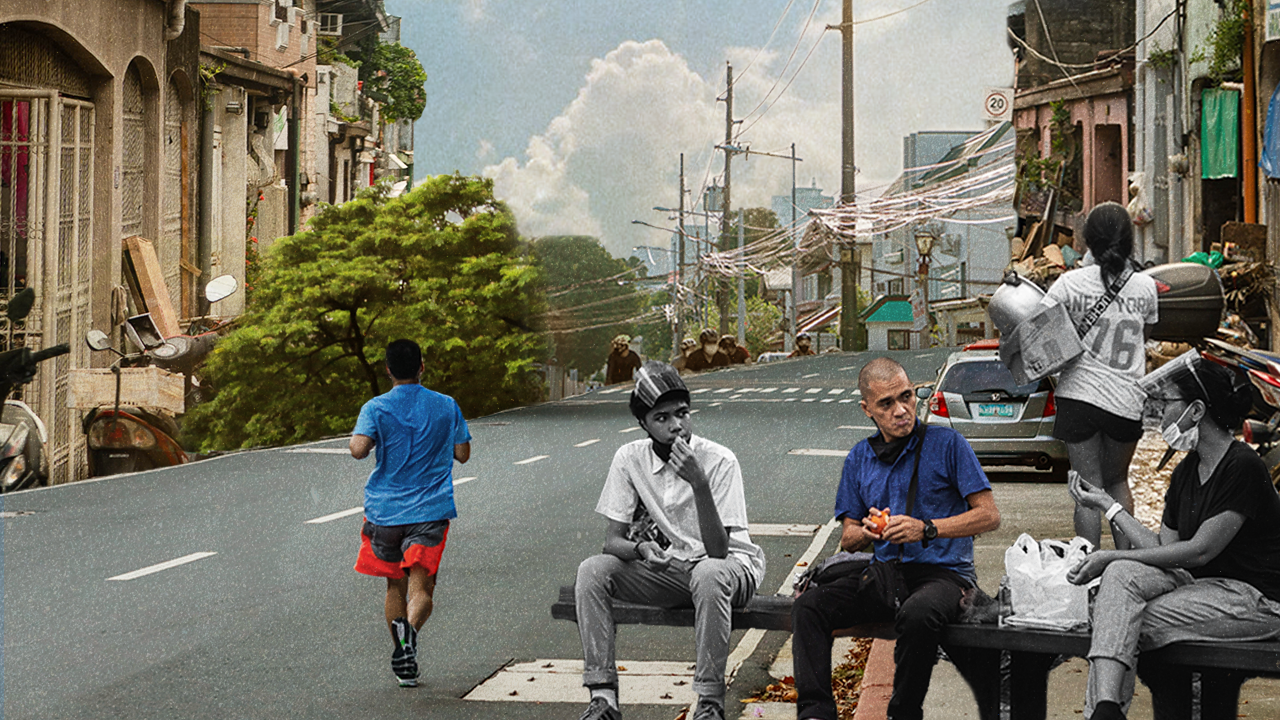ANY SEEMING progress in the Philippines’ COVID-19 response is often upended by an uptick in cases, signaling a virus that evolves and a country content with playing catch-up rather than evolving with it. Unfortunately, this discussion on pandemic recovery is chiefly concerned with economic reforms—to the extent that bolder changes to current structures of cities are neglected.
Thus, today, the Philippines is still notoriously known as a hotspot of the COVID-19 virus due to the infeasibility of social distancing in highly dense areas such as informal settlements and high-rise built environments. As the country transitions into an evolved new normal, the country faces a deeply fundamental challenge: the unsustainable city landscape—and the ubiquity of urban planning at large.
Chronic vulnerability
In 2020, the Philippine Statistics Authority reported an urban population of 58.93 million people—accounting for 54% of all Philippine residents. Of these citizens, over 25 million are housed in informal settlements.
“[Informal settlements] sprung up organically… [The Philippines is] a high growth country [with] a lot of poverty… I don’t think [the] government could cope with [those] challenges,” Liveable Cities Philippines Chairman Guillermo “Bill” Luz noted, emphasizing the twin goals of space and cost efficiency that informal settlements satisfy.
Apart from their shelters having frail construction and insufficient living space, informal settlements are characterized by inaccessibility to sanitation facilities and clean water. Unfortunately, the spontaneous construction of informal settlements makes solutions to these problems elusive by design. Moreover, government attempts at developing informal settlements have avoided restructuring efforts in favor of relocation and financial aid projects.
Due to the chronic insecurity of their housing, the urban poor were uniquely impacted by the COVID-19 pandemic. Former Ateneo de Manila University School of Medicine and Public Health Dean Dr. Manuel Dayrit remarked, “As an airborne infection, the COVID-19 virus quickly [spreads] in close-contact settings, crowded places, and closed spaces. These are the very conditions in urban poor areas.”
Further exacerbating this risk of viral infections is the dire lack of facilities for clean water, sanitation, and waste disposal. This bo Dayrit, a population’s health and quality of life are tied to the state of its local urban planning.
Risks on the rise
Although the urban poor bear the brunt of the pandemic, individuals with higher incomes in urbanized cities are not exempted from its effects. Factors that characterize an urbanized city, including rapid industrialization and a high density of infrastructure, also contribute to the high transmissibility of disease due to the propensity for high-traffic spaces.
According to Luz, the prevalence of high-density living is due to various lifestyle decisions, including the proximity of condominiums to worksites, schools, churches, or malls. Economic priorities also seek to cleave residents to high-rise buildings in urbanized areas. “When you attract people in [cities], it also has an impact on city income, so there is an incentive for cities to attract these developments,” he said.
A 2020 study revealed that built environments—which includes condominiums, apartments, and hotels—foster the spread of COVID-19 due to close interactions among individuals. Heating, ventilation, and air conditioning systems, as well as high-contact objects found in common places, serve as agents of transmission in these built environments.
Whereas these factors are concerned with public environments, private spaces of residents also worsen the spread of the virus. Self-isolation in small homes is seen to reinforce problems concerning disruptions in familiar social movement patterns due to insufficient space for personal mobility. Thus, while these higher-income places ostensibly have the funds to finance better COVID-19 protective gear, other preventive measures such as social distancing and self isolation may not always be implemented due to lacking space—exacerbating transmission risks.
Policies such as the Mandatory Reporting of Notifiable Diseases and Health Events of Public Health Concern Act then become consequential in high-rise residential buildings, allowing building administrators to track residents who contract the virus. Despite this, research shows that self isolation or quarantine is never always practical, especially when individuals live with others in compact spaces where they all share the same facilities and rooms.
Thus, Luz mentioned the importance of other technology, namely healthier ventilation and fewer high-contact surfaces, as well as open spaces to urban cities. The latter becomes particularly important “not only for reasons [of] exercise and play, but they’re also there for safety.”
Building back, better
Notably, condensed living structures, when well-designed, can be advantageous for a community. For instance, water distribution is more easily administered to residences when they are vertically organized in a small tract of land than sprawled across a broad area. This is a benefit demonstrated by condominiums, which are also seeing post-pandemic design changes that favor open spaces.
The larger issue lies in informal settlements, which are difficult to strategically design. Luz noted that because informal settlements organically arise and construction of sanitation facilities are left to residents’ discretion, regulations could only respond to how these settlements were already designed.
For instance, socialized housing policies designate residential spaces for low-income citizens and effectively do away with the unplanned and disordered construction of informal settlements. While the country currently enacts this mandate, these spaces have become mired in implementation issues, now hardly affordable to the low-income and instead lost to commercialization to serve the interests of business.
Aside from such policies, Dayrit hints at another approach to create a safe and healthy environment for all: a regenerative use of resources to gain the most benefit. “Where urban planning creates healthy places, the conditions for living become more wholesome and enjoyable.”
Ultimately, the ubiquity of urban planning exceeds far beyond the need to map out cities. The developmental values of a just urban design—such as security in the domain of health—favors the vast majority of Filipinos rather than merely the upper segments of the income bracket.




